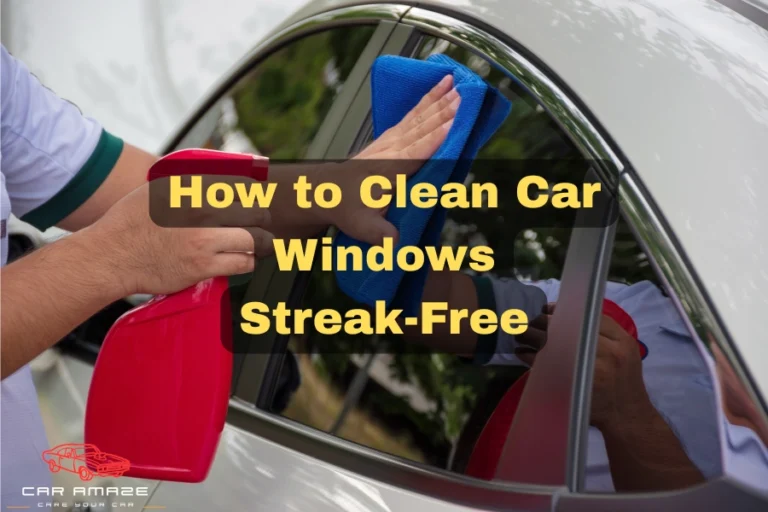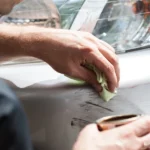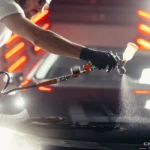How to Wax Car with Buffer: Best Strategies for Shiny Look

Properly waxing the car makes it look shiny and protects it from scratches and sunlight damage. However, when you wax car with buffer, make sure you use the right technique for optimal results. The buffer is a machine that helps to spread the wax evenly on the car’s surface. If you are planning to wax your car with a buffer, this guide is for you. Read it completely to know how to wax a car with buffer and get the best results.
Table of contents
- Benefits of Waxing a Car with Buffer
- How to Wax Car with Buffer: 3 Main Aspects
- Getting Your Car Ready for Waxing
- Choosing the right buffer
- Steps to wax car with buffer
- Advanced waxing techniques
- Common mistakes to avoid
- Conclusion
- FAQs
Benefits of Waxing a Car with Buffer
You can apply the wax by hand, but using the buffer has several benefits. Here are some reasons why using a buffer can make a big difference.
- Buffer helps to spread the wax more evenly and produces better shine.
- It speeds up the waxing process, saves time, and reduces effort.
- With the help of a buffer, you can reduce physical strain. The manual process involves a lot of rubbing and scrubbing.
- The buffer helps the wax penetrate deeper into the paint.
How to Wax Car with Buffer: 3 Main Aspects
When it comes to waxing a car with buffer, there are three main aspects to consider:
- Preparing the car properly
- Choosing the right buffer
- Applying wax correctly
Getting Your Car Ready for Waxing
Before starting the waxing process, fully prepare your car for it. Not preparing the vehicle before waxing can lead to poor results and paint damage. There are three common steps to get your car ready.
1. Cleaning the car
The first is to wash your car with high-quality car shampoo and a soft sponge. Wash every part of the car and make sure that there is no dust and debris. Finally, rinse away all the shampoo with high-pressure water and dry the car using a microfiber cloth. The condition of the car also helps to determine how often you should wax your car.

2. Removing tar and bug splatters
There might be some sticky spots of tar and bug splatter that are difficult to remove with shampoo. Removing these spots is necessary to produce good results from waxing. To get rid of these spots, spray a commercial tar and bug remover over the area and wipe it with a soft cloth.
3. Clay bar treatment
To get a more smooth and clean surface, use the clay bar treatment. If you are planning to wax car with buffer, this treatment will help you remove any remaining particles. Just spray some clay lubricant on the car’s surface and gently spread and clean it with a soft cloth. After some time, you will notice a more clean, smooth, and shiny surface.
Choosing the right buffer
The choice of the buffer affects the end result of the waxing job. There are two main types of buffers: orbital buffer and dual-action buffer. Here is a comparison of both:
| Orbital buffers | Dual-action buffer |
|---|---|
| These buffers move in circular motion and are very easy to handle. They are usually recommended for beginners and minor fixtures. With an orbital buffer, the risk of damage is less, but you will not achieve high-level polishing. | These buffers move in back-and-forth motion and are very helpful for high-level polishing. They are very powerful and can easily remove the paint imperfections. It might also help to repair some of the paint damage due to hail. However, before fixing the hail damage, determine whether it is worth fixing the damage to a car or not. |

Steps to wax car with buffer
After preparing the car surface and choosing the right buffer, it’s time to wax car with buffer. Following these steps for waxing the car with buffer carefully:
1. Apply wax evenly
First, apply a small amount of wax to the buffer pad. Place the buffer on the car’s surface and spread it evenly on the whole area. Keep adding more wax to the buffer pad as you move to other surfaces and feel a shortage of wax.
2. Work in sections
Instead of randomly applying the wax, divide the car into sections and move it step by step. For example, divide the car surface into sections like the hood, doors, and fenders. First, completely apply the wax to one section and then move towards the next. It will ensure a more even application without the wax drying out.
3. Using the buffer
In the initial stage, set your buffer at a low speed and move it slowly on the surface. The best way is to move the buffer in straight lines or in circular motion. Please do not press the buffer too hard on the surface because too much pressure may damage the paint.
4. Getting into tight spaces
The most difficult part is waxing the tight spaces like edges or corners. The buffer will not fit perfectly in some places, such as door handles, side mirrors, etc. To wax these places, we recommend that you avoid using the buffer and apply the wax by hand.
Advanced waxing techniques
Once you are comfortable with the basic waxing process, you can try some advanced techniques. Here are some techniques to achieve better results.
1. Art of circular motion
Using the buffer in a circular motion helps create a more smooth finish. This technique will help you spread the wax evenly, produce better shine, and remove any streaks.
2. Waxing around trim and moldings
Instead of using a hand, focus on waxing around trim and moldings with a buffer. Please note that these areas are delicate and can easily be damaged if you apply too much pressure. Use the buffer at lower speed at these places, and do not put too much pressure.

3. Controlling the buffer
When waxing the curved places, the buffer mostly slips out of hand. Always keep a firm grip on the buffer and maintain a steady motion. Uncontrolled movements can cause the buffer to skip or create uneven wax patches.
Common mistakes to avoid
Even with extreme care, big or small mistakes can happen. If you have learned how to wax car with buffer, focus on these common mistakes as well.
Overheating the paint
Do not use the buffer at a high speed or apply too much pressure. Too much speed and pressure will cause overheating and damage the paint. To avoid this issue, keep the buffer at normal speed, apply low pressure, and wax the car in a shaded area.
Applying too much wax
Too much wax can cause streaks and make the buffing process harder. The best practice is to apply a little wax to the buffer pad and add more as you move toward other sections.
Ignoring buffer maintenance
Not taking care of buffer and ignoring maintenance can lead to poor performance. Keep your buffer clean, and always inspect it before starting the waxing process. Damaged buffers can produce scratches on the car’s surface and may even cause permanent damage.

Troubleshooting common issues
If you notice any marks or uneven patches, there are solutions for these. These marks usually appear when you use a damaged buffer or use the buffer incorrectly. To fix this issue, just reapply small wax on the affected area and use the buffer at a lower speed.
Conclusion
In short, for perfect shine and finish, it is necessary to know how to wax car with buffer. With the right preparation and techniques, you can complete the waxing process quickly and easily. Start with washing your car, choosing the right buffer, and applying the wax evenly. Please use the buffer at low speed and do not apply too much pressure.
FAQs
Can I use any buffer to wax my car?
You can use any buffer, but for better results only choose a buffer specially designed for waxing. The two common types of buffers for waxing are orbital and dual-action buffers.
How often should I wax my car with a buffer?
You should wax your car with buffer after every 3 to 6 months. If your car gets dirty due to mud, rain, or tree sap, immediately wax it with a buffer. If you want to clean tree sap from a car, read our guide on how to remove tree sap from a car.
Is it necessary to clean the car before waxing it?
Yes, it is mandatory to thoroughly clean the car before applying wax. Otherwise, when you use the buff, the dirt and grime will cause scratches on the car’s paint.
How much wax should I apply when using a buffer?
Start with a small amount of wax on the buffer pad and add more as you proceed to the next section. More wax will lead to more streaks and make it easier to buff the wax.
What’s the difference between an orbital buffer and a dual-action buffer?
The main difference between these two buffers is their rotation pattern. The orbital buffer rotates in circular motion, while the dual-action buffer can move in a back-and-forth position.







